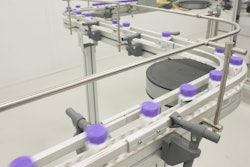
That’s around the time leading brands began to look at outsourcing as a strategic activity as opposed to a tactical make-pack-ship kind of business.
If we examine the difference in the capabilities of suppliers (including contract packagers) then and now, most would say those capabilities are significantly higher today. Yet if we compare key performance indicators (KPIs)—what they are, how we manage them and the process—most people would say that things really haven’t changed very much. In fact, it would seem there is a more disparate approach to KPIs in our industry than in almost any other area.
You may be thinking that the magic in KPIs is about measuring performance, and getting what you measure. Of course this is true, however, there are a couple of interesting trends in the industry which are worthy of note.
Is it really a partnership?
First, we are seeing a movement toward “Two-Way Scorecarding.” Brian Slobodow, formerly of Johnson & Johnson, pioneered this concept in our industry more than a decade ago. (For more on the concept, search the Web to read Slobodow’s 2008 article in the MIT Sloan Management Review, When Supplier Partnerships Aren’t.)
Slobodow introduced the idea of not only measuring the supplier’s performance, but also the customer’s. For example, areas of measurement for included accounts payable and forecast accuracy on the customer side. I was working for a supplier of J&J at that time and I can tell you our jointly-conducted Quarterly Business Reviews were significantly different than with any other customer, with our organization given the power to grade and share our results with J&J!
We are seeing more and more examples of these types of two-way measurement applications today. Many believe this trend can be attributed to the shift in balance of power.
When our industry began to evolve, virtually all of the power in the relationship resided with the customer (i.e., brand owner), other than in exceptional situations. Today, suppliers have demonstrated the ability to contribute value to customer supply chains and, as a result, some customers want to be the customer of choice. If you want to be the “customer of choice” then you have to be aware of how you benchmark vs. other customers and also be concerned with how your operation impacts your suppliers. KPIs are one way to do so.
The other trend of interest is suppliers’ influence on customers’ KPIs and their KPI process. First, let’s start with this premise: If you are a supplier, and you have 10 customers, you probably have 10 different scorecards. At F4SS we had a team focused on scorecards and, in doing research, we found that many customers had the same KPI name, but a different calculation. Or, sometimes the calculation was similar, but the KPI had a different name. One of the biggest challenges is getting the industry on the same page—what should the KPIs be called and how should they be calculated? If we don’t have a common approach, then suppliers’ internal measurements, systems and focus are fragmented.
If, on the other hand, we can align as an industry around a common approach, suppliers can build internal processes and systems to focus on achieving these key metrics consistently—with all customers—day in and day out. It’s a much more efficient approach.
How do we get there? There are two possibilities—customers harmonize scorecards or suppliers drive the change with their customers. If you had asked me 10 years ago if the latter was possible, I would have said, without hesitation, “No Way!” In fact, I would not have thought it possible in my lifetime. I have been proven wrong by Dave Hempson and his team at Marietta, a non-foods contract manufacturer.
Dave co-leads F4SS’ Integrated Replenishment Team and has done a masterful job of migrating his customer base to a common scorecarding approach modeled on F4SS’ Harmonized Scorecard. In doing so, Marietta has gained not only significant efficiencies, but is now laser focused on the metrics. This focus has contributed to significant operating improvement for the benefit of Marietta and all of their customers. It’s a terrific case study and example of why we all must continually challenge the status quo.
Stay tuned for more on KPIs in future columns.
Lisa Shambro is executive director of the Foundation for Strategic Sourcing/F4SS. Contact her at [email protected]
























